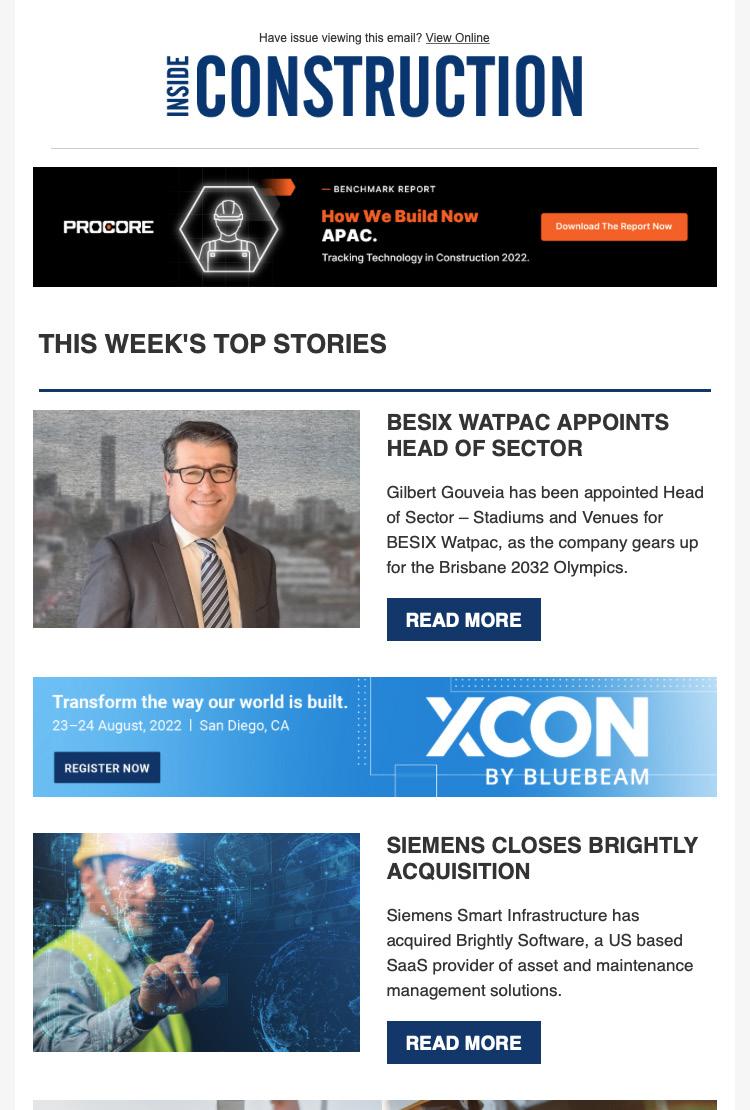
2 minute read
FOCUS Mental health and wellbeing
consulting companies to ensure that when the program is launched nationwide the approach is aligned and consistent across the different states and regions.
He says the biggest outcome that he personally wanted out of the pilot program on the Mordialloc Freeway Project, besides being able to prove that it worked, was to be able to give the framework back to the industry to utilise. “It has resulted in The Integrated Framework, a roadmap that addresses the key issues around mental health and wellbeing in the construction industry,” says Fuller. “We now have a website that anyone can visit and use elements of The Integrated Framework at no cost – further, WII aims to continue to roll out the framework and make sure that it’s available for any size contractor to use.”
The Integrated Framework follows four key areas: Constructive and Committed Leadership; Culture and Connection; Communication and Participation; and Practical Templates, Tools and Resources.
In determining the key areas, the WII steering committee held focus sessions to identify the causes of the current state of mental health in the construction industry. A cross-section of more than 80 employees from companies who had participated in the survey for the Downey-Swinburne report engaged in the workshops.
The findings showed that leadership is one of the top reasons for poor mental health and wellbeing in the workplace. “We found the importance of committed and empowering leadership is vital to cultural change,” says Fuller. “Constructive and Committed Leadership is the first step to a brighter future for the construction
Workshop participants expressed a need for better Culture and Connection in the workplace, something Fuller says is about pushing for change in the status quo. “A connected team is the backbone of having a great culture,” he says. “If you have a connected workforce, trust and accountability will follow.”
Communication and Participation is another key area participants expressed a need for improvement. Fuller says it’s about management leading the way in participation. If a project director attends a leadership session with their team, they’re immediately communicating that they value what the session has to offer. They’re communicating that they care about self and
Finally, the area of Practical Templates, Tools and Resources aims to provide straightforward and easy to use material for all workplaces. “We want to provide supportive resources that people can easily digest and implement in the
“Each of these key areas are interconnected with the other – a lot of the time it’s about having the ability to have a conversation around behaviours or attitudes and making the time for
“A lot of people within this industry have never sat and reflected on their own leadership behaviours and it’s time we all do.”
The benefits of rolling out The Integrated Framework across the Australian construction industry are vast Fuller explains. “By increasing our leadership’s awareness of behaviour and creating more psychologically safe environments throughout our industry, we can build an industry that’s more attractive to those that aren’t currently within it and improve the lives of those that are,” he says.
The Integrated Framework has been implemented across a number of organisations that are achieving positive mental health outcomes and continues to spread rapidly across the construction industry.
If you’d like to learn more, visit The Integrated Framework website at www.theintegratedframework.com.au








